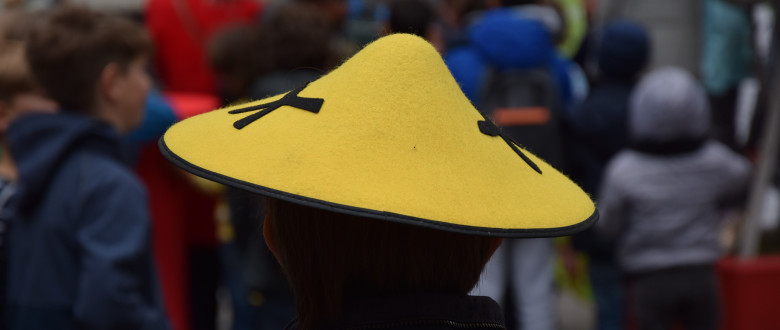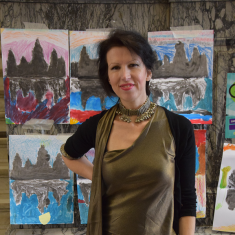
“It was scorching hot, sweat was dripping down our faces. We were at the New Year’s celebrations of our partner school and enjoying a traditional dance. I noticed how important the hands are, and the feet. Their movements told stories of their own. And then an epic change. All students rushed to the stage when the Khmer Pop song came on. And I thought to myself: this is what I want to take back to my school.”
Inge Giezek (right) is a Morals teacher and former dancer. She teaches at a primary school in Antwerp (Belgium), which has a schoollink with a primary school in Toul Thmor (Cambodia). She opens up about the many benefits of having a schoollink and inspires other teachers to follow suit.

Dealing with otherness
“It was during my visit to the partner school that I discovered how powerful gestures are in Cambodia. When they do their traditional dance, they use their bodies in a very symbolic way."
"I brought that dance style, with all its sensitivities, back to my own classroom. I wanted my learners to experience how dance can be used to express culture. In Belgium, gestures aren’t as sensitive. Some of ours could even be considered rude or inappropriate in Cambodia. That clash of cultures between how we move and tell stories and how they move and tell stories was something I wanted my learners to experience through dance. That broadens their horizon.”
“I use the schoollink with Cambodia in my classes as a read thread to teach pupils how to deal with otherness. That fits perfectly in my curriculum: ‘me and the other’, ‘me and the world’, ‘cultural education’, ‘children’s rights’. I integrate Cambodia in my learning activities to stimulate their intercultural competences. For example, I teach my pupils how to greet in Khmer. When our Cambodian colleagues visit us, they can put that into practice. Our visitors will feel even more welcome.”
Kid to kid
“Every pupil from 6 tot 12 years old is excited about the schoollink in my classes. Last year we organised a Skype session with the help of a teacher there who spoke English. The Belgian and Cambodian pupils could communicate, kid to kid. 10,000 kilometres was bridged in an instant. They sang to each other and taught each other words in their o wn language. They applauded and congratulated each time the other side pronounced a word properly!"
"We also make self-portraits in my class with small messages introducing ourselves, and send them over. The Cambodian students hang them up on the classroom wall. On our shared Facebook page we post videos, about Belgian table manners for example. Our Cambodian colleagues test them in their lessons, and make something in return. That’s a little more challenging, but everyone does what they can with the resources they have. And just like we organise a Cambodian week or day, they too organise a Belgian day on the other side of the world. They make waffles and fries and dance to Belgian hit songs.”
“We invest different amounts of time in our schoollink, depending on the activities. For example, you’ll need about 10 hours in total to teach your pupils a traditional dance: your preparations at home, plus teaching the kids, plus practicing it. But there are other activities that can be just as valuable but need less time and energy, like videos, drawings and making songs for the other pupils."
"I’m well aware that my morals class is the ideal setting for these activities. But my colleagues do their best too. A teacher gave a maths lesson with Khmer numbers, for example. The schoollink is also integrated in language and geography lessons. An insider tip for all teachers excited to start a schoollink: surround yourselves with like-minded colleagues and form a strong team.”
Compassion
“The schoollink is a weapon against indifference. Thanks to the activities, our students are very involved with everything Cambodian, in their personal lives too. They talk about it so often at home, that some parents have promised them to take them on holiday there!"
"If they see or hear something on the news about Cambodia, their attention spikes. It gives them a small wake-up call, and the next day they share with their classmates what they’ve learnt. That’s a first step towards less indifference. It wakes them up to the rest of the world. They learn to link certain events to their own environment. If I teach them about the horrible history of Cambodia under Pol Pot’s reign, I can start a discussion about the second World War and the Holocaust in the same lesson, or about what’s happening in Syria now."
"The schoollink teaches them to feel compassion for others they’ve never met, and to think about what they can do for these people. They want to make a difference.”




